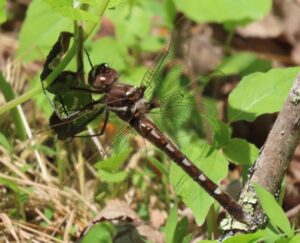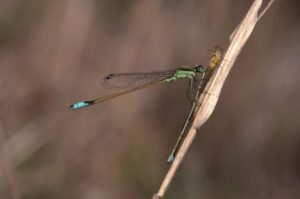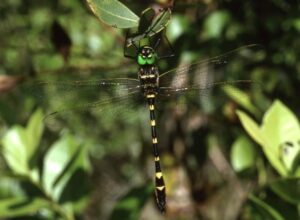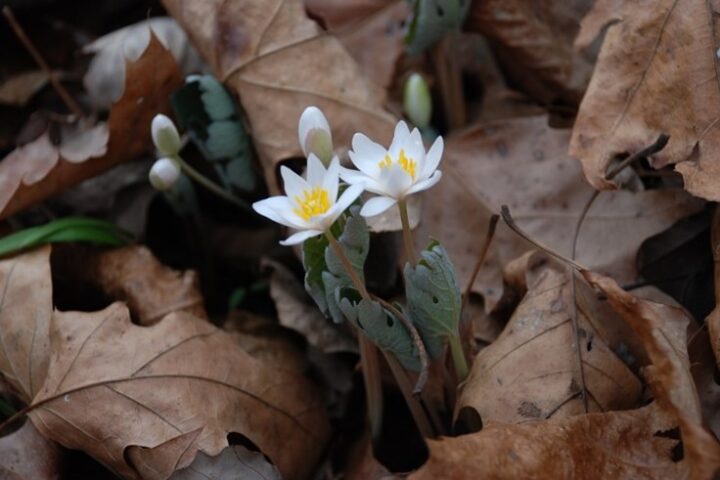
By Betsy Leppo

Stream Cruiser (Didymops transversa), by Betsy Leppo
There are many signs of spring that I look forward to, from the emergence of the first wildflower, to the arrival of the first migrating warbler. I greet each new face and song as a friend I missed while they were gone. Then summer barrels in with an explosion of greenery, the unleashing of school children, and the sudden chores of yard and garden. In the rush of summer, it is easy to lose track of the unraveling wonders of the growing season. But seeing the first dragonfly of the year always causes me to pause to admire these marvelous creatures.
One of the first dragonflies I saw this year was this stream cruiser at Ricketts Glen State Park. The stream cruiser needs clean, forested streams with sunny glades in the adjacent forest where it can hunt for insects. Dragonflies are an ancient lineage of insects, with the first ancestral fossils dating to 325 million years ago. Dragonflies and damselflies are related insects within the insect order of Odonata. Dragonflies have larger bodies, wider abdomens, unequal-sized wings, and rest with their wings held out flat. Damselflies are typically smaller, with a slender abdomen, and equal-sized wings that narrow at the base. They rest with their wings above their body, either pressed together or jauntily angled.

Rambur’s Forktail damselfly (Ischnura ramburii), feeding on a Golden Bluet (Enallagma sulcatum), by Clark N. Shiffer.
Immature dragonflies and damselflies live in aquatic environments such as streams, lakes, ponds, and vernal pools. They emerge as winged adults in late spring and summer. As both nymphs and adults, they feed on small insects and other invertebrates. They help maintain balanced ecosystems and reduce the numbers of biting insects that bother us. They will occasionally cannibalize, as shown in the Rambur’s Forktail photo.

Georgia River Cruiser (Macromia georgina), by Clark N. Shiffer.
Photographing dragonflies and damselflies is great a way to experience these beautiful insects up close. Consider submitting your photos to an online site like iNaturalist, BugGuide, or Odonata Central, where you can get help with identifications and learn about the wildlife in your area. Your contributions to these community-science driven warehouses of data are also very helpful to the scientific and conservation community!

Multiple views of the insect (top to bottom, stem to stern) help greatly with identification.
Forest Fridays are published weekly by the Bureau of Forestry, Pennsylvania Department of Conservation and Natural Resources.




